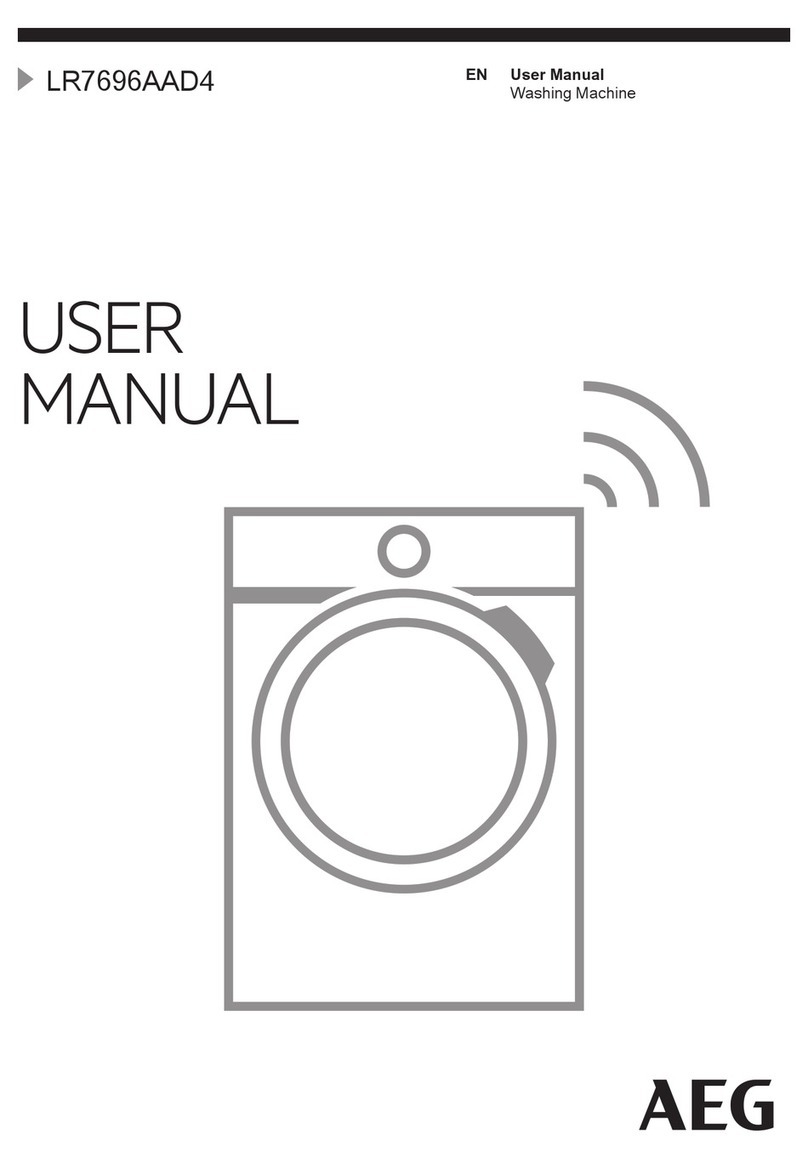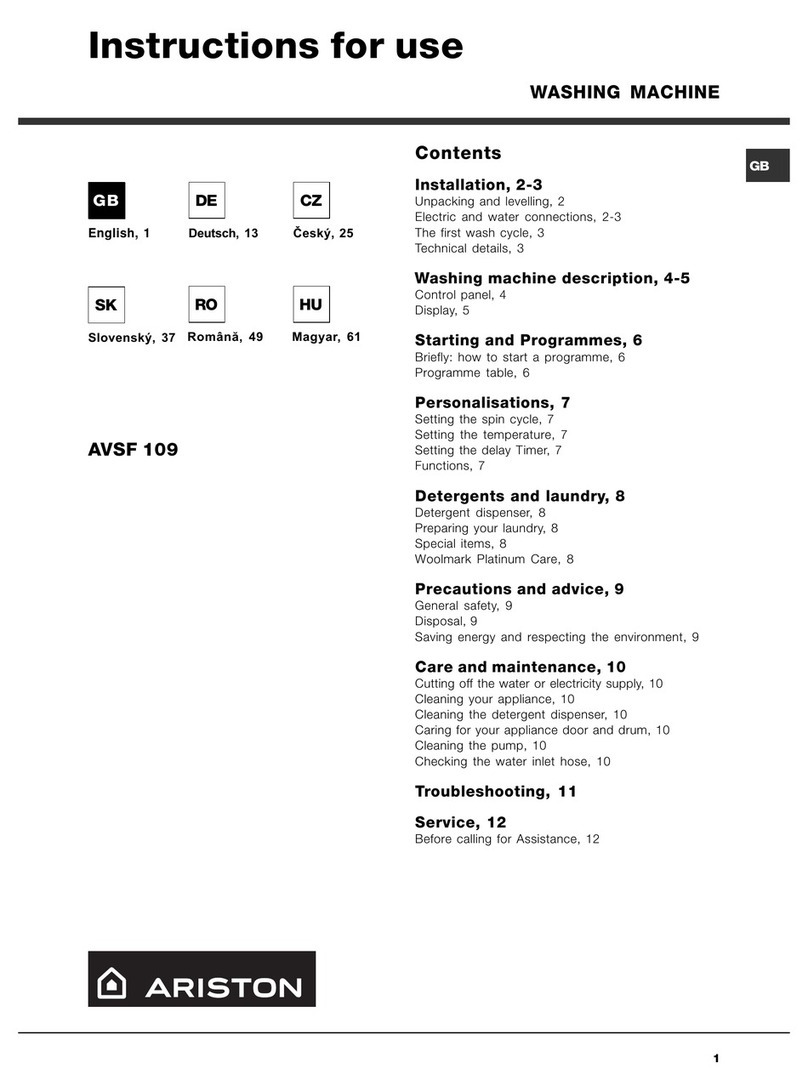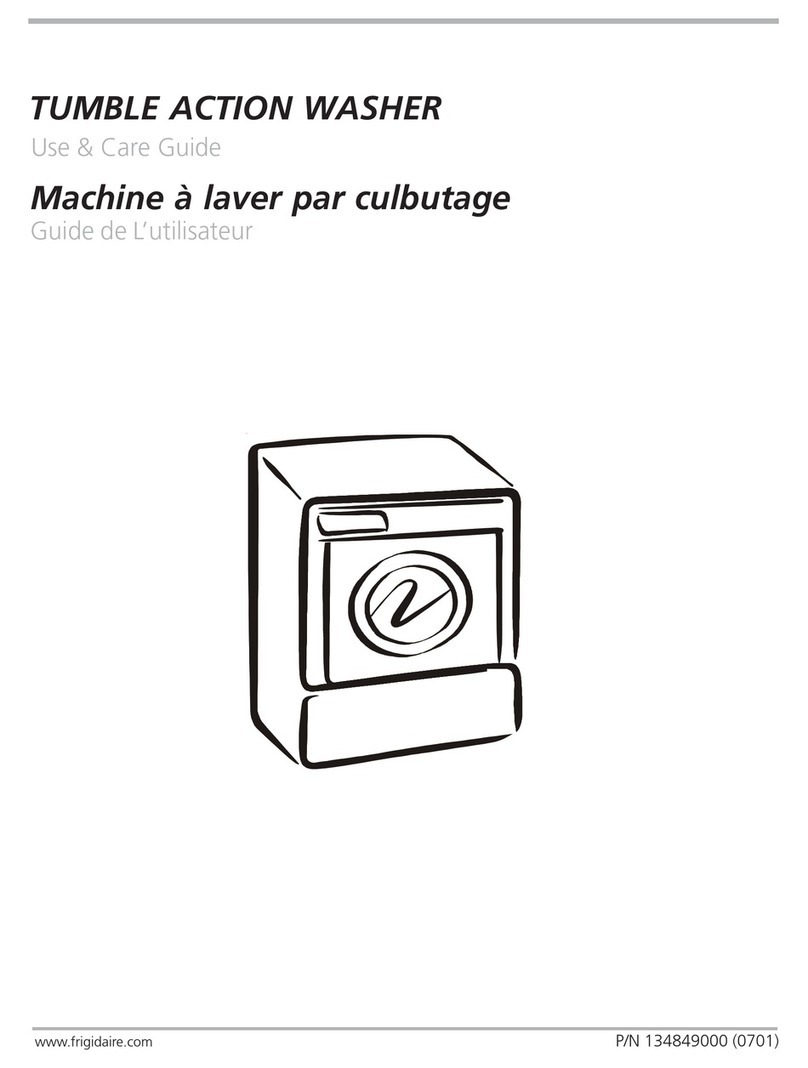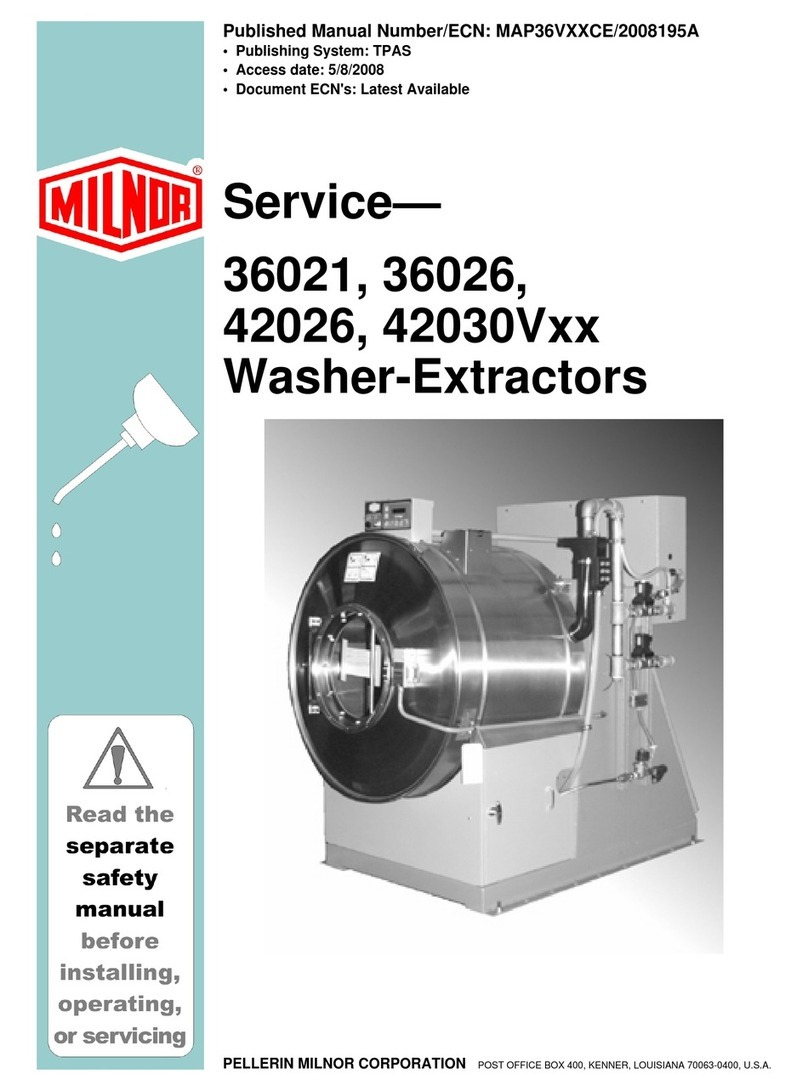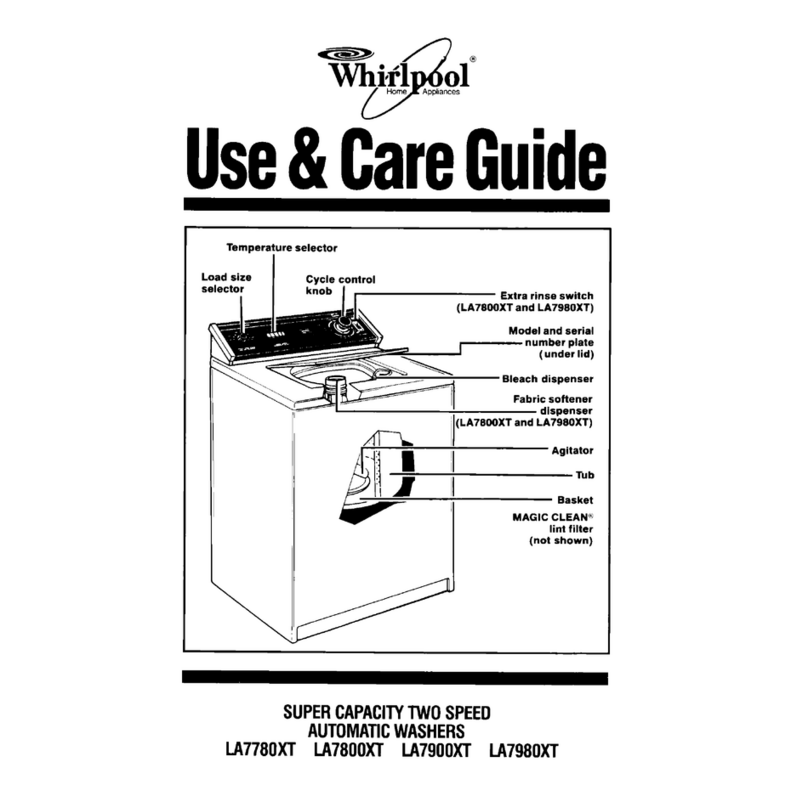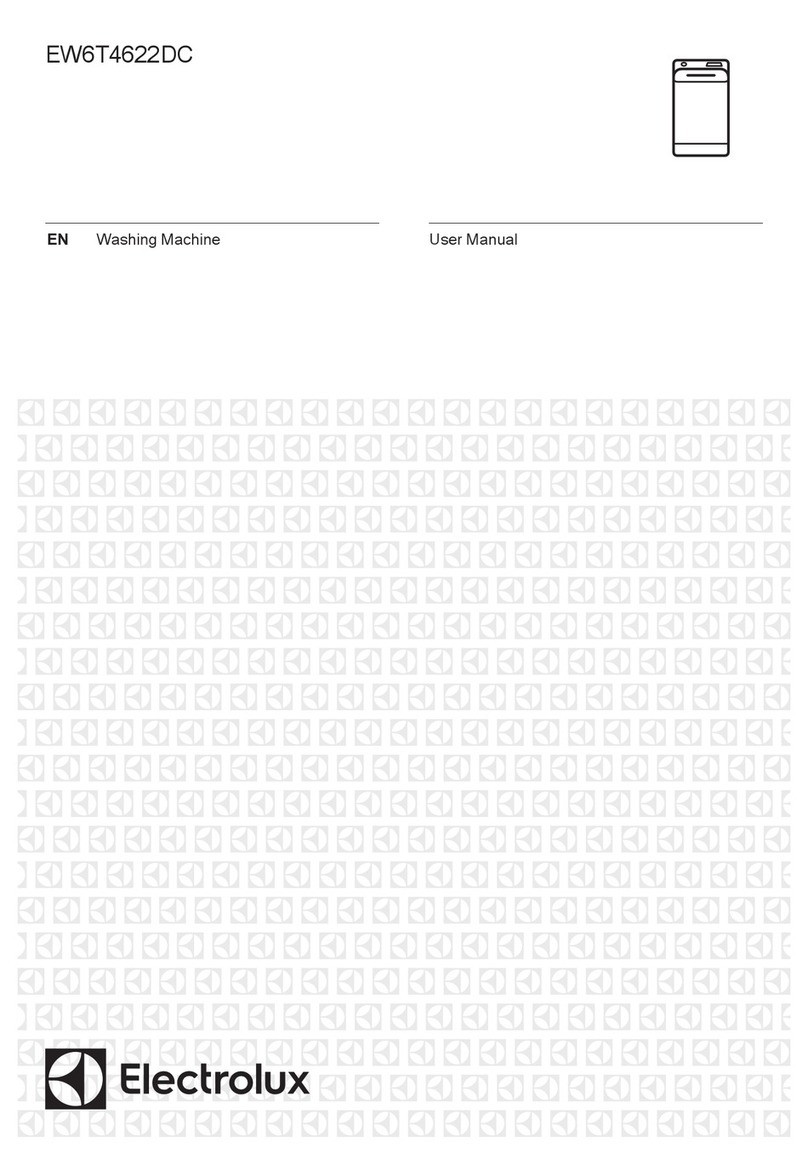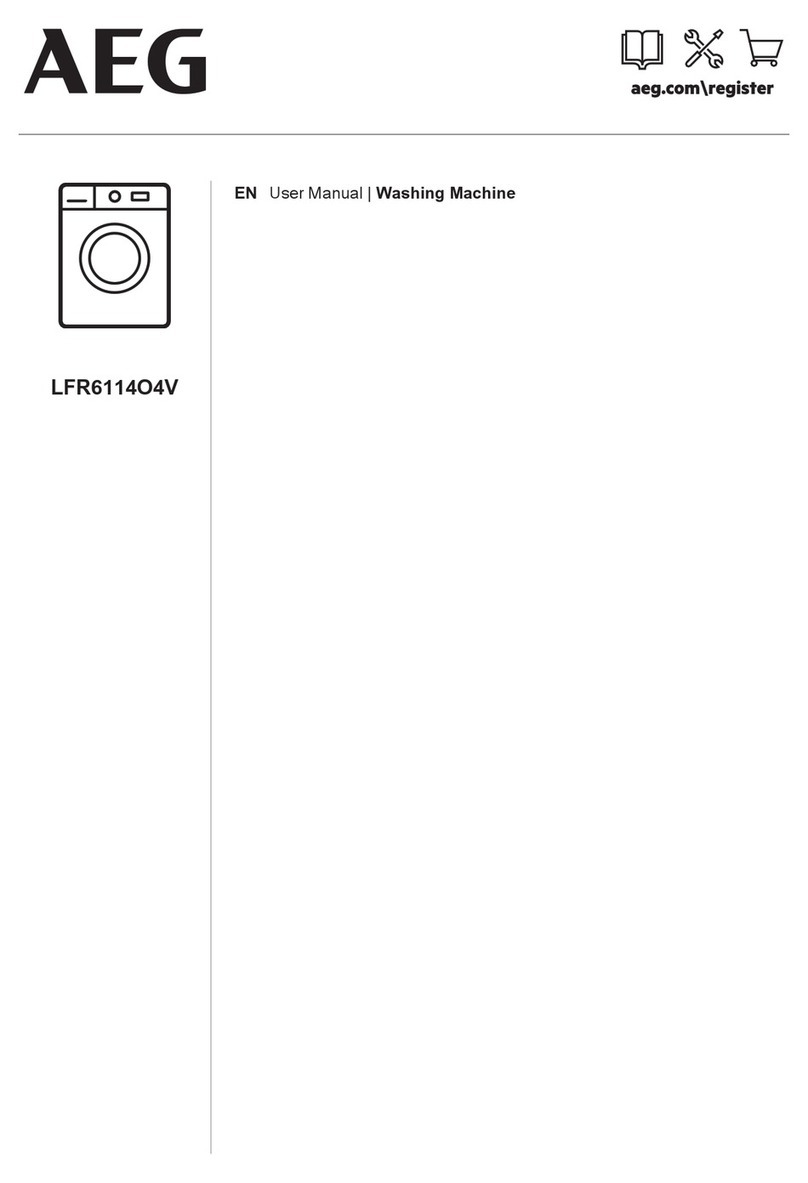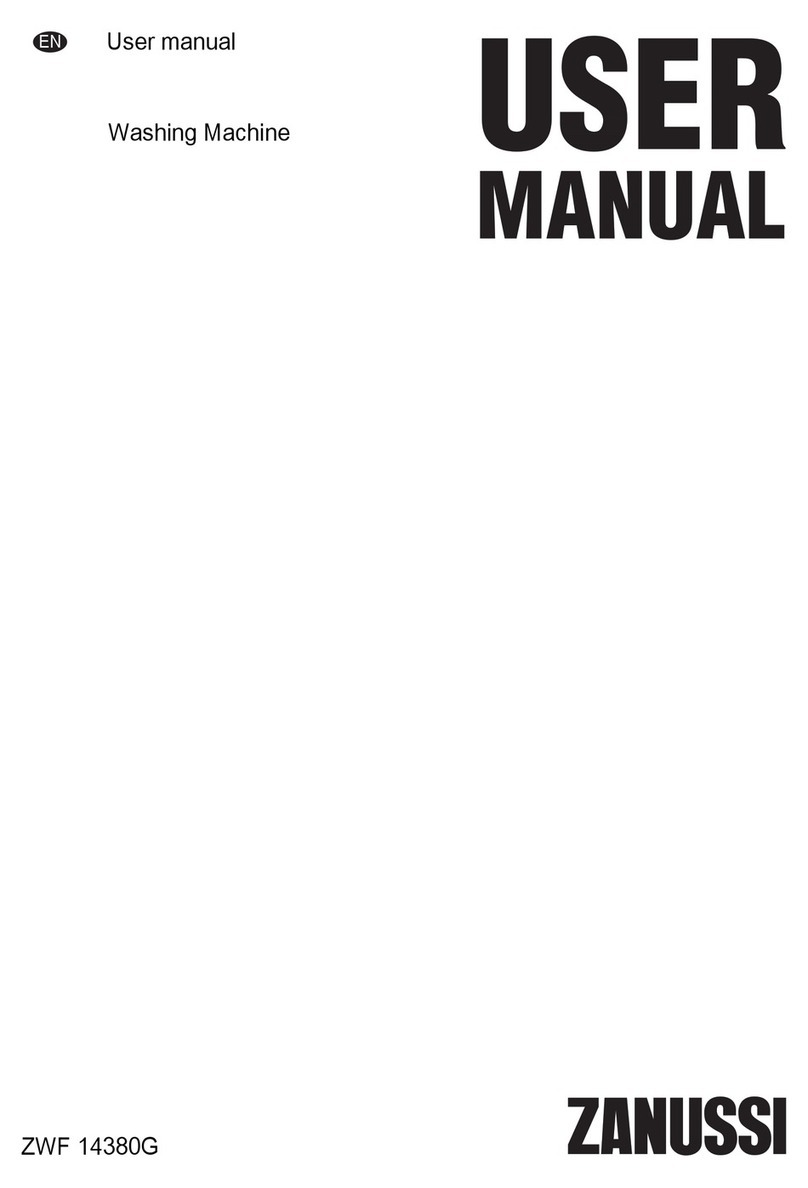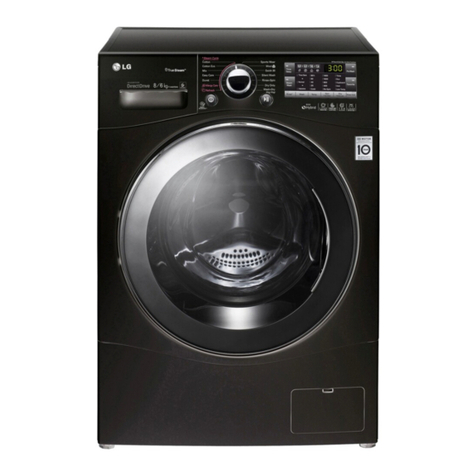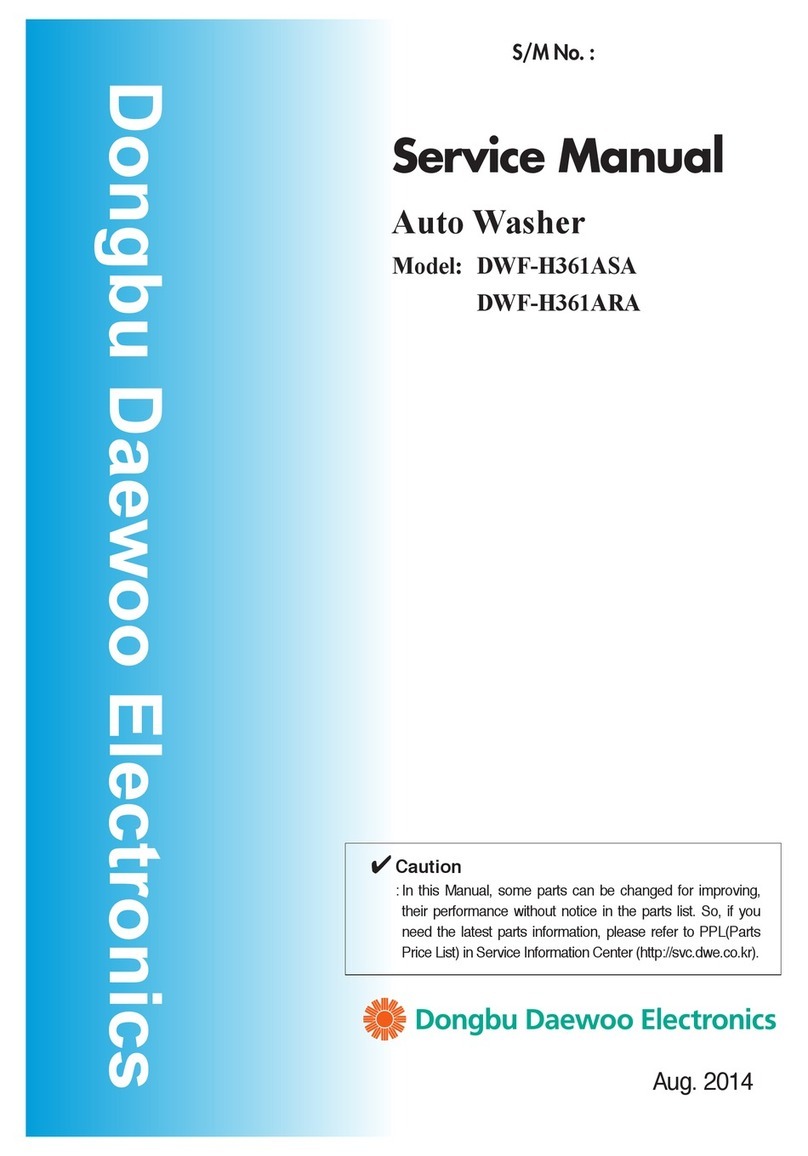BikeMaster 15-2134 User manual

InstructionDisclaimer
Dennis Kirk provides instructions to help our customers better understand how to install the
products we sell. The instructions are exact copies of what the manufacturer includes with the
product being sold.
That means the quality and accuracy of the instructions is solely dependent on what the
manufacturer produces. We do our best to make the text legible and the pictures viewable.
However, the end result depends largely on the quality of instructions the manufacturer
provides.
Therefore, you will find that some instructions are not of the highest quality. Sometimes text is
hard to read and pictures are not easy to see. At times you will find the overall look of the
instructions to be less than professional. However, we feel it is better to provide what we have
rather than provide nothing at all.
To the best of our knowledge the instructions and application information contained in the
instructions is accurate. However, Dennis Kirk assumes no liability related to any errors that
may be contained in the copy of the manufacturer’s instructions we provide. Buyers are solely
responsible to insure that product use is consistent with their application.
800-969-7501 so we can further assist you regarding additional product information or any other
business related questions.
Thank you for doing business with Dennis Kirk.

•
BikelVlaster
®
TROUBLESHOOTING
GUIDE
QUAUTY
•
PERFORMANCE
•
VAlUE
Problem
Probable
Cause
Solution
Wash
pump
will
not
run
1.Power
cord
unplugged
2.810wn
fuse
3.Pump
is
broken
1.Make
sure
power
cord
is
connected.
2.
Check
circuit
breaker
or
outlet
for
blown
fuse.
3.Call
Customer
Service.
1.Solvent
level
low.
1.Remove
strainer
bas-
2.
Clogged
pump
/
spout.
kept
and
check
the
sol-
vent
level.
Transfer
Wash
pump
runs
but
solvent
does
not
flow
3.Pump
is
broken
.
additional
solvent
to
the
wash
basin
.
2.Check
for
clogs
in
the
wash
pump
and/or
spout.
3.
Call
Customer
Service.
Vacuum
pump
sounds
too
loud
1.Debris
caught
in
pump
.
2.Pump
is
broken.
1.
Look
for
debris
under-
neath
the
pump.
debris
and
rebalance
.
2.Call
Customer
Service.
Too
much
solvent
in
wash
basin
1.
Holding
tank
has
over-
flowed
into
wash
basin
.
2.Pump
is
broken
.
1.
Remove
all
excess
fluid
and
run
a
distillation
cycle
to
move
cleaning
agent
back
into
the
holding
tank
.
2.Call
Customer
Service.
PORTABLE PARTS WASHER
15-2134
HO
SE
WITH
BRUSH
BASIN
GENERAL
SAFETY
RULES
FOR
ALL
ELECTRIC
POWER
TOOLS
CUSTOMER
SERVICE:
877-848-1320
IA
WARNING
I
READ
AND
UNDERSTAND
ALL
INSTRUCTIONS.
Fa
i
lure
to
follow
all
instructions
listed
below
may
result
in
electric
BikelVlaster
®
shock
,
fire
and
/
or
serious
personal
injury.
QUAUTY
•
PERFORMANCE
•
VALUE
www.bikemaster.com

SAVE
THESE
INSTRUCTIONS
FOR
FUTURE
REFERENCE
RECOGNIZE
SAFETY
SYMBOLS,
WORDS
AND
LABELS
The
safety
instructions
provided
in
this
manual
are
not
intended
to
cover
all
possible
conditions
and
practices
that
may
occur
when
operating
,
maintaining
and
cleaning
power
tools.
Always
use
common
sense
and
pay
particular
attention
to
all
the
DANGER,
WARNING,
CAUTION
and
NOTE
statements
of
this
manual.
A
This
is
the
safety
alert
symbol.
It
is
used
to
alert
you
to
potential
personal
injury
hazards.
Obey
all
safety
messages
that
follow
this
symbol
to
avoid
possible
injury
or
death.
A
DANGER
DANGER
indicates
an
imminently
hazardous
situation
which,
if
not
avoided
,
will
result
in
death
or
serious
injury
.
WARNING
indicates
a
potentially
hazardous
situation
IA
WARNING
I
which,
if
not
avoided,
could
result
in
death
or
serious
injury
.
IA
CAUTION
CAUTION
indicates
a
potentially
hazardous
situation
which,
if
not
avoided,
may
result
in
minor
or
moderate
injury.
CAUTION
CAUTION
used
without
the
safety
alert
symbol
indicates
a
potentially
hazardous
situation
which,
if
not
avoided
,
may
result
in
property
damage.
NOTE
NOTE
provides
additional
information
that
is
useful
for
proper
use
and
maintenance
of
this
tool.
If
a
NOTE
is
indicated
make
sure
it
is
fully
understood
.
IMPORTANT
SAFEGUARDS
A
DANGER
People
with
electronic
devices,
such
as
pacemakers,
should
consult
their
physician(s)
before
using
this
product.
Operation
of
electrical
equipment
in
close
proximity
to
a
heart
pacemaker
could
cause
interference
or
failure
of
the
pacemaker
.
WARNING:
Some
dust
created
by
power
sanding,
sawing
,
grinding,
drilling
and
other
construction
activities
contain
chemicals
known
to
the
State
of
California
to
cause
cancer,
birth
defects
or
other
reproductive
harm.
Some
ex
amples
of
these
chemicals
are:
•
Lead
from
lead-based
paints
.
•
Crystalline
silica
from
bricks
and
cement
and
other
masonry
products,and
arsenic
and
chromium
from
chemically-treated
lumber.
Your
risk
from
these
ex
posures
varies
,
depending
on
how
often
you
do
this
type
of
work.
To
reduce
your
exposure
to
these
chemicals:
work
in
a
well
ventilated
area
,
and
work
with
approved
safety
equipment
,
such
as
dust
masks
that
are
specially
designed
to
filter
out
microscopic
particles.
WARNING:
The
plastic
on
this
product
contains
lead
, a
chemical
known
to
the
State
of
California
to
cause
cancer
and
birth
defects
or
other
reproduc-
tive
harm.
Wash
hands
after
handling
.
WORK
AREA
IA
WARNING
I
Keep
your
work
area
clean
and
well
lit.
Cluttered
work
benches
and
dark
work
areas
may
cause
accidents
or
injury.
DO
NOT
operate
power
tools
in
explosive
areas,
such
as
in
the
presence
of
flammable
liquids,
gases
or
dust.
Power
tools
create
sparks
which
may
ignite
dust
or
fumes.
Keep
bystanders
,
children
and
visitors
away
while
operating
power
tools.
Distractions
can
cause
you
to
lose
control.
2

ELECTRICAL
SAFETY
IMPORTANT
SAFETY
RULES
FOR
PARTS
WASHERS
IA
WARNING
I
Grounded
tools
must
be
plugged
into
an
outlet
properly
installed
and
grounded
in
accordance
wi
th
all
codes
and
ordinances.
Never
remove
the
grounding
prong
or
modify
the
plug
in
any
way
.
Do
not
use
any
adaptor
plugs.
Check
with
a
qualified
electrician
if
you
are
in
doubt
as
to
whether
the
outlet
is
properly
grounded.
If
the
tools
electrically
malfunction
or
breakdown
,
grounding
provides
a
low
resistance
path
to
carr
y
electricity
away
from
the
u
se
r.
Avoid
bod
y
contact
with
grounded
s
urfaces
such
as
pipes,
radiat
ors,
range
s
and
refrigerators.
There
is
an
increased
ri
sk
of
electric
s
hock
if
your
body
is
grounded
.
Do
not
expose
power
tools
to
rain
or
wet
conditions.
Water
entering
a
power
tool
will
increase
the
risk
of
electric
shock.
Do
not
abuse
the
cord.
Never
use
the
cord
to
carry
the
tool
or
pull
the
plug
from
an
outlet.
Keep
the
cord
away
from
heat,
oil,
s
harp
edges,
or
moving
parts
.
Replace
damaged
cords
immediately
.
Damaged
cords
increase
the
risk
of
electric
shock.
Always
unplug
tool
from
the
electrical
receptacle
before
making
adjustments,
changing
parts,
or
performing
any
maintenance
.
IA
WARNING
J
NEVER
use
gasoline
,
toluene
,
thinner
or
any
other
volatile
solvent
t
ype
cleaner
with
this
parts
washer.
These
types
01
solvents
will
dam
age
the
pump
and
the
part
s
was
her
it
sell
.
Use
water-soluble
cleaning
agents
only
.
ALWAYS
wear
salety
goggles,
gloves
and
protective
clothing
while
operating
this
was
her
.
II
cleaning
agent
co
mes
in
contact
with
the
skin
,
follow
manufacturer's
removal
instructions
immediately
DO
NOT
allow
cleaning
agent
to
remain
on
the
ski
n.
ALWAYS
clean
up
work
area
after
u
se.
Spilled
cleaning
agents
should
be
wiped
up
as
soon
as
possible
to
avoid
as
lipping
hazard
.
NEVER
leave
the
parts
washer
unattended.
When
washer
is
not
in
use
,
close
the
cover
and
disconnect
the
cord
from
the
power
supply.
Alwa
ys
unplug
power
cord
from
the
electrical
receptacle
before
making
adjustments
,
changing
parts,
or
performing
any
maintenance.
DO
NOT
touch
hot
parts.
Unit
will
heat
up
during
use.
ALWAYS
clean
filter
after
use.
Clean
sludge
out
of
water
tank
periodically
to
prevent
clogging.
Be
careful
not
to
damage
parts
PERSONAL
SAFETY
washer
when
cleaning
parts
with
s
harp
points
or
edges.
IA
WARNING
I
DO
NOT
unplug
power
cord
with
wet
hands
.
Keep
cleaning
agent
temperature
between
32°and
Stay
a
lert,
watch
what
you
are
doing
,
and
u
se
common
sense
when
operating
a
power
tool.
Do
not
use
tool
while
tired
or
under
the
influence
of
drugs,
alcohol
or
medication.
A
moment
of
inattention
while
operating
power
tools
may
re
s
ult
in
se
rious
personal
injury.
Dress
properly
.
Do
not
wear
loose
clothing
or
jewel
ry.
Contain
long
hair.
Keep
your
hair
,
clothing
,
and
gloves
away
from
moving
part
s.
Loose
clothing
,
jewelry
or
long
hair
can
be
caught
in
moving
parts.
Never
leave
tool
running
unattended.
Unplug
when
not
attended.
Do
not
overreach.
Keep
proper
footing
and
balance
at
all
times.
Proper
footing
and
balance
enable
better
control
of
the
tool
in
une
xpe
cted
situations.
Use
safety
equipment.
Always
wear
eye
protection.
Everyday
eyeglasses
only
have
impact
resi
s
tant
lenses,
they
are
NOT
safety
glas
ses
.
Du
st
mask,
non-skid
salety
shoes,
hard
hat,
or
hearing
protection
must
be
u
sed
for
appropriate
conditions.
Use
parts
washer
only
in
well-ventilated
areas.
Cleaning
agents
emit
fume
s
which
can
be
dangerous
if
inhaled
in
concentrated
do
ses.
Unit
heats
while
in
use
. 00
NOT
touch
hot
parts.
3
104
of
(OO
to
40°C)
.
FIRST
AID
Cleaning
Agent
in
Eye-
Flush
with
large
quantities
of
wate
rlor
at
least
15
minutes
and
call
a
phYSician.
Cleaning
Agent
on
Skin-
Remove
contaminated
clothing
and
wash
area
01
contact
thoroughly
with
warm
soapy
water.
Wash
contaminated
clothing
belore
reuse.
Throwawa
y
contaminated
shoes
.
Inhalation
01
Fumes-
Get
to
Ire
sh
air
right
away
.
II
victim
is
having
breathing
difficulties,
give
oxygen
and
call
a
physiCian
immediately.
Cleaning
Agent
is
Swallowed
-
DO
NOT
induce
vomiting
Call
a
physician
immediat
el
y.
4

SOLVENT
HANDLING
IA
WARNING
I
Adding
additional
chemicals
to
the
cleaning
agent
(gasoline,
fuel
oil,kerosene,
etc.)
,
may
increase
the
danger
of
a
hazardous
situation.
NEVER
add
anything
to
the
cleaning
agent.
USE
WATER-SOLUBLE
SOLVENTS
ONLY!
Promptly
clean
up
any
spills.
If
parts
washer
is
leaking,
repair
the
leak
as
soon
as
it
is
safe
to
do
so.
DO
NOT
operate
the
parts
washer
if it
is
leaking.
Practice
proper
hygiene
when
handling
solvent.
Always
wash
hands
before
eating,
drinking
or
smoking.
Do
not
eat,
drink
or
smoke
in
the
work
area.
DO
NOT
operate
this
equipment
in
an
area
without
ventilation.
Solvent
fumes
can
be
dangerous
in
concentrated
doses.
NEVER
spray
aerosols
or
other
combustible
gasses
around
the
parts
washer.
Sparking
parts
inside
the
parts
washer
can
cause
combustible
fumes
to
ignite.
DO
NOT
smoke
near
cleaning
agent.
Combustible
residue
from
the
cleaning
agent
may
remain
on
the
cleaned
parts
or
in
the
washer
itself.
To
reduce
residue
,
replace
the
cleaning
agent
and
clean
the
parts
washer
frequently.
DO
NOT
attempt
to
clean
absorbent
materials
like
paper,
cloth
,
wood
or
leather.
DO
NOT
put
hot
parts
into
the
parts
washer.
NEVER
open
the
distillation
drain
knob
while
it
feels
hot.
Wait
until
the
parts
washer
has
completed
its
cycle
and
cooled
down
before
removing
any
oil
waste.
Keep
lid
closed
when
not
in
use
.
Avoid
splashing
or
spilling
cleaning
agent
while
cleaning
.
Use
only
water
soluble
solvents
and
mineral
spirits
with
a fI
ash
point
greater
than
140°.
CAUTION:
Avoid
solvents
with
unstable
reactives
The
appliance
is
not
to
be
used
by
children
or
person
with
reduced
physical
sensory
or
mental
capabilities
or
lack
of
experience
and
knowledge,
unless
they
have
been
given
supervision
or
instruction.
Children
should
be
supervised
to
ensure
that
they
do
not
play
with
the
appliance.
REPAIR,
DISPOSAL
AND
HANDLING
IA
WARNING
I
If
the
supply
cord
is
damaged,
it
must
be
replaced
by
the
manufacturer
,
its
service
agent
or
similarly
qualified
persons
in
order
to
avoid
a
hazard.
DO
NOT
dispose
of
electrical
appliances
as
unsorted
municipal
waste,
use
separate
collection
facilities
Contact
your
local
government
for
information
regarding
the
collection
systems
available
If
electrical
appliances
are
disposed
of
in
landfills
or
dumps
,
hazardous
substances
can
leak
into
the
groundwater
and
get
into
the
food
chain,
damaging
your
health
and
well-being.
When
replacing
old
appliances
with
new
one
,
the
retailer
is
legally
obligated
to
take
back
your
old
appliance
for
disposal
at
least
for
free
of
charge
.
FOR
INDOOR
USE
ONLY.
5
INSTALLATION
BEFORE
USAGE
1
Unpack
the
unit
from
carton
and
inspect
for
damage
.
2.
Place
washer
on
a
stable
surface
,
such
as
a
work
bench
or
table
.
3.Connect
pump
cord
to
standard
power
outlet
.
DETERGENT
FILLING
PROCEDURE
1.Make
sure
the
drain
cap
on
the
side
of
the
unit
is
tightly
closed.
2.Remove
the
filler
cap
and
fill
with
recommended
detergent
(Water
Soluble
Cleaning
Agent),
the
tank
volume
is
approximately
5
gallons/20
Liters.
IA
WARNING
I
WARNING:
Do
not
use
Flammable
solvents
(gasoline,
toluene,
thinner
and
etc.)
OPERATING
INSTRUCTION
1.
Open
lid
and
secure
in
open
position.
2.
Make
sure
the
unit
contains
at
least
15
liters/approximately
4
gallons
of
cleaning
solvent.
IA
CAUTION
I
Never
allow
the
cleaning
solvent
level
to
.
fall
below
the
level
of
the
pumpinlet,
thiS
can
cause
the
pump
to
run
dry
causing
pump
damage
and
overheating
I
3.
The
detergent
can
be
reused
many
times,
provided
it
is
still
functioning
well.
There
is
no
need
to
change
solvent
for
every
job.
4.
Turn
on
the
unit
using
the
switch
on
the
side
of
the
unit.
5.
Wash
parts
in
basin
using
brush
to
assist
in
removing
heavier
deposits.
6.
Switch
unit
off,
and
allow
parts
to
drain
completely
before
removing
from
basin.
7.
When
finished,
close
lid
and
unplug
the
unit.
8.
Check
the
basin
filter
in
the
unit
periodically
,
especially
if
you
have
just
complete
a
cleaning
with
heavy
deposits.
Failure
to
do
so
can
lead
to
excess
detergent
in
basin
.
DETERGENT
REPLACEMENT
PROCEDURE
1.
Make
sure
that
you
have
a
container
with
sufficient
volume
to
accept
ALL
the
old
detergent
(AT
LEAST
5
GALLONS!)
2.
Place
a
funnel
of
sufficient
size
in
the
5
gallon
container,
and
place
the
unit
in
a
position
so
that
the
old
detergent
will
go
into
the
funnel
when
released.
3.
Open
the
drain
cap
on
the
side
of
the
unit.
IA
CAUTION
I
The
detergent
can
spray
out
as
the
drain
cap
is
being
removed,
make
sure
you
are
prepared
for
this,
AND
MAKE
SURE
YOU
ARE
WEARING
SAFETY
GLASSESI
4.
As
the
detergent
flow
slows,
tip
the
unit
in
the
direction
of
the
funnel,
to
insure
that
as
much
of
the
old
detergent
as
possible
is
drained
from
the
unit.
5.
Once
all
the
old
detergent
has
been
removed,
replace
and
secure
the
drain
cap
firmly.
6.
Take
this
opportunity
to
clean
the
basin
area,
the
filter
basket,
and
the
unit
overall.
This
will
help
avoid
contamination
of
the
fresh
detergent.
7.
Refill
the
unit
with
fresh
detergent
as
described
above
in
Detergent
Filling
Procedure.
8.
ALL
OLD
DETERGENT
MUST
BE
TAKEN
TO
AN
OFFICIAL
HAZARDOUS
LIQUIDS
DISPOSAL
FACILITY!
These
are
available
locally,
and
some
are
provided
by
the
city
in
which
you
live
,
or
you
can
check
with
your
local
Gasoline
Station,
Car
Mechanic
Shop,
Dealership
,
Machine
Shop,
Specialized
Disposal
Company,
or
City
Government.
DO
NOT
DISPOSE
OF
DETERGENT
IN
AN
IRRESPONSIBLE
OR
DANGEROUS
MANNER!
To
do
so
is
against
the
law!
6
Table of contents


